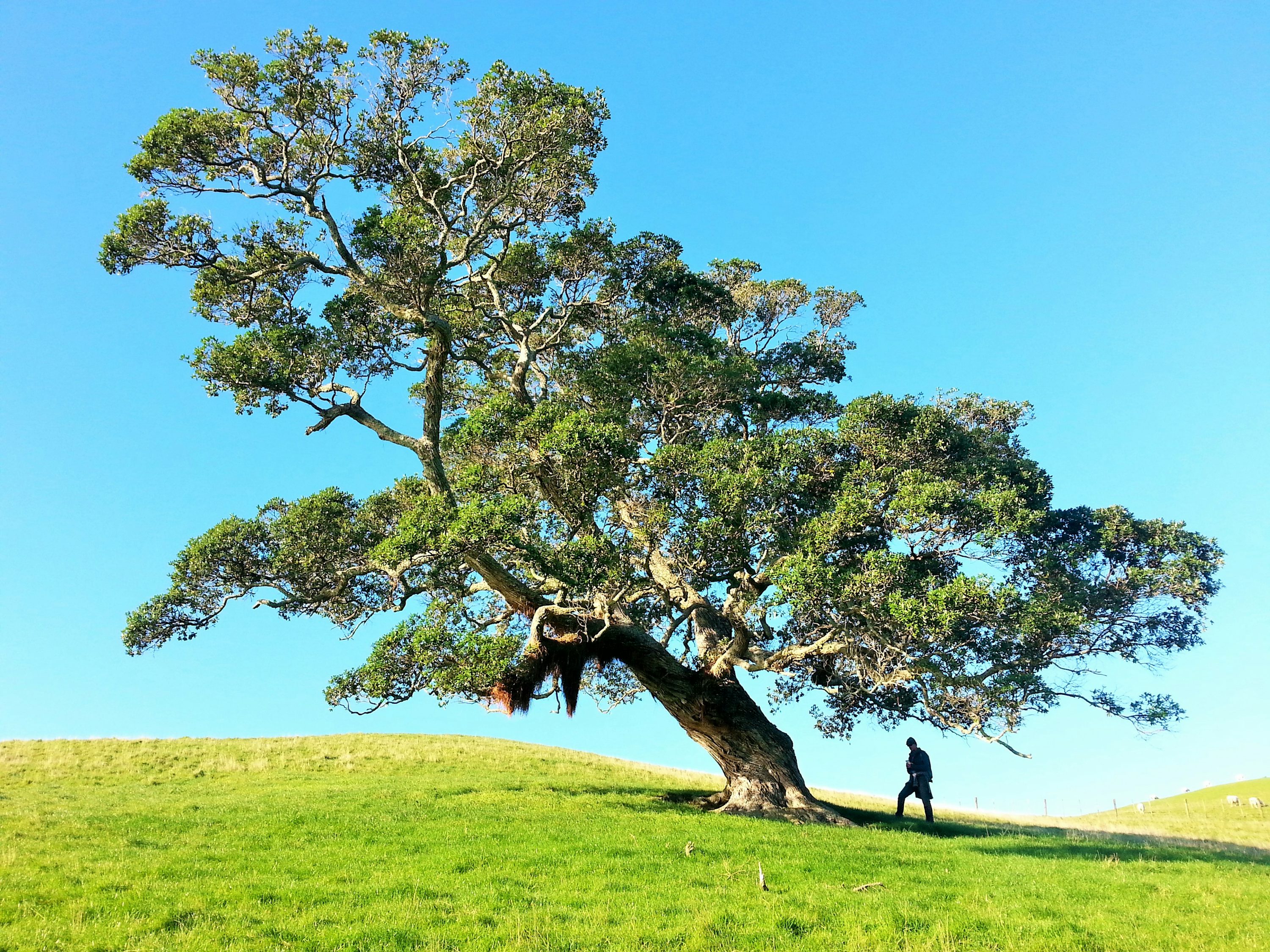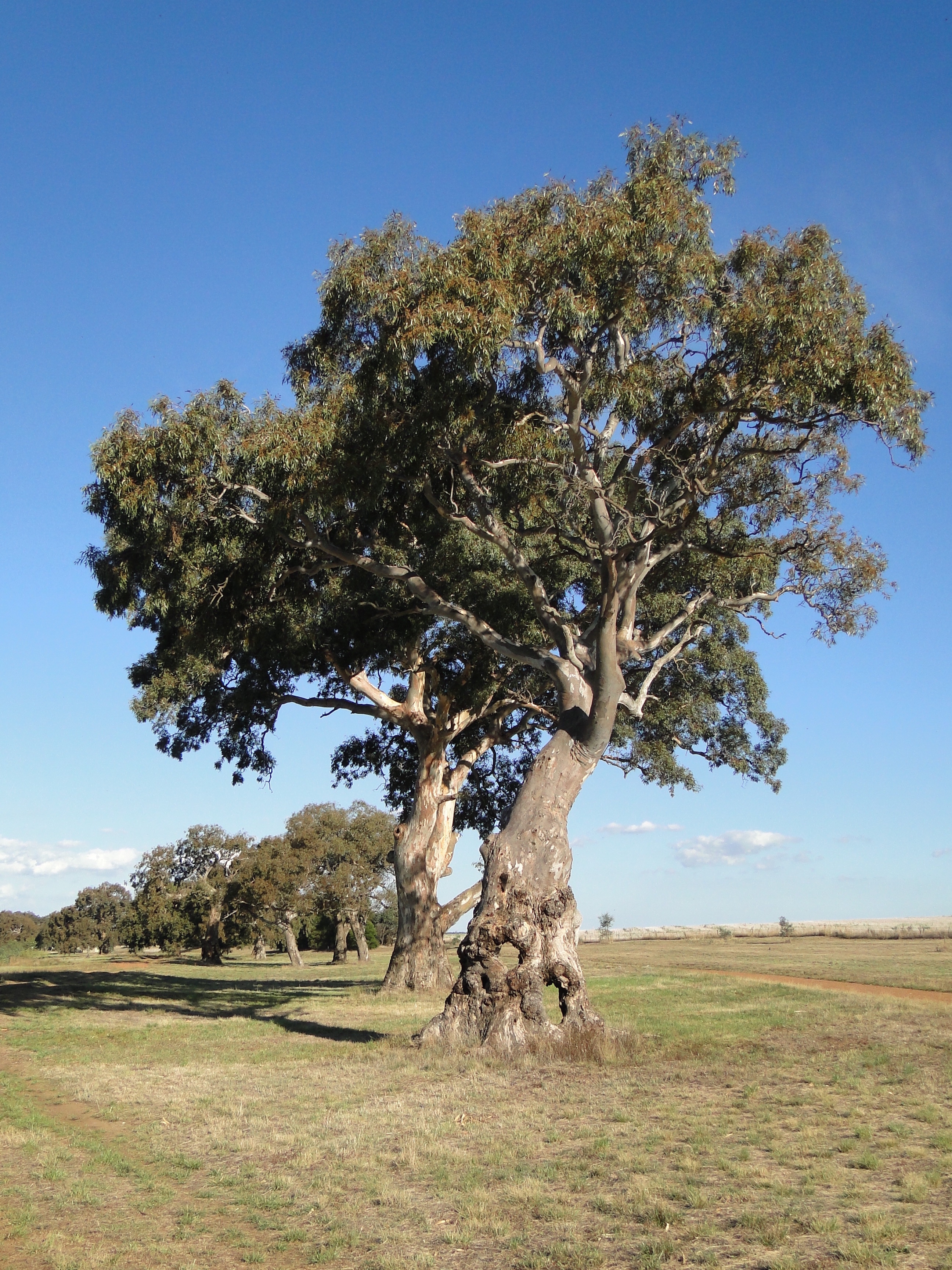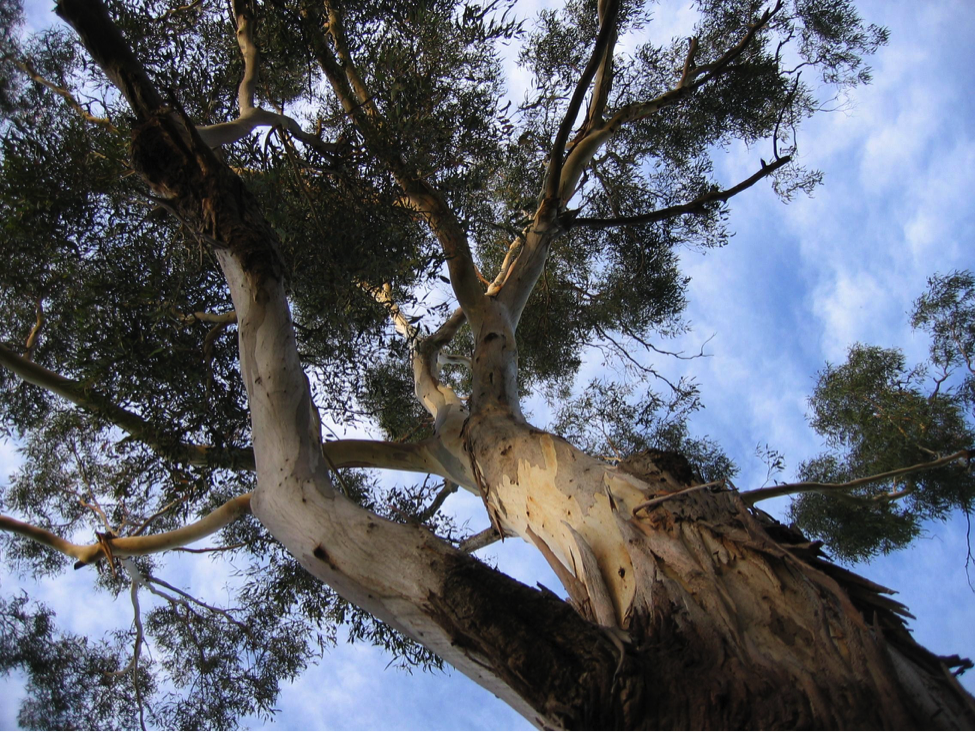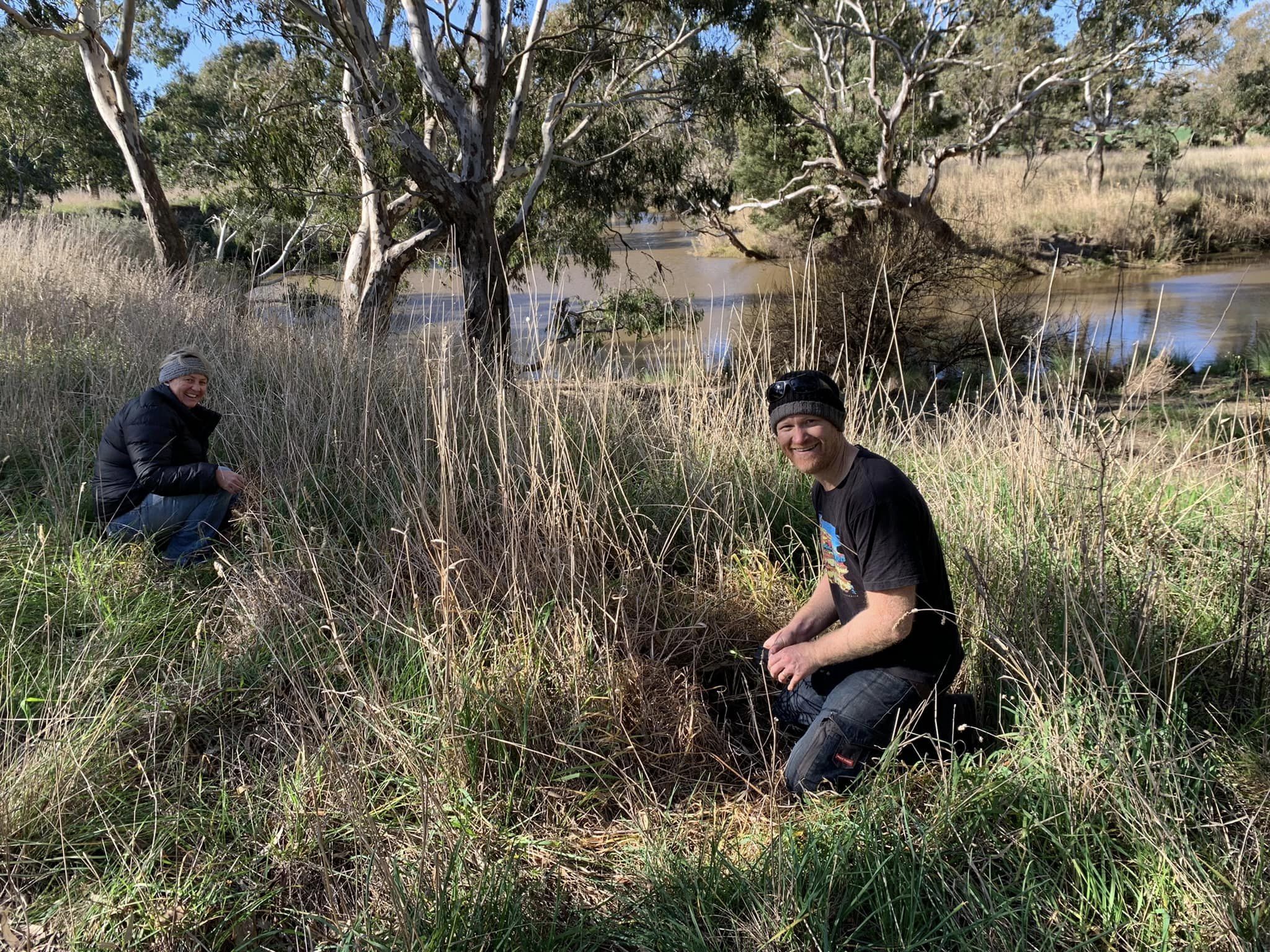Paddock trees are remnants of the landscape that has long gone and they are often the last remnants of previously widespread woodlands. In some threatened woodland communities, very little remnant vegetation remains apart from paddock trees, making these trees even more vitally important. Some species of paddock trees include Eucalyptus varieties such as River Red Gum, Yellow Gum, Manna Gum, Yellow Box, Grey Box, Black Box and Spotted Gum.
Paddock trees tell us what was here before we came.

Large old trees standing alone in paddocks are a familiar feature of our rural landscapes. Aesthetically pleasing, they are also critical for our iconic native wildlife. Often the oldest, largest trees remaining after last century clearing, paddock trees may be hundreds of years old.
These are the paddock trees and viewed from the roadside they seem unremarkable. They are like a group of strangers in an old photograph, interesting but without a story to connect us. They are just old trees, inconsequential and irrelevant to our busy lives. But are they?
In truth these paddock trees are an enduring and vital part of a timeless view. They have been part of this landscape for thousands of years, since the end of the last ice age and possibly before it began.
Stephen Murphy | Recreating the Country.
Some of the roles these large old trees play in an ecosystem.
- Soil structure, quality and moisture: Native trees improve soil structure and quality, reducing wind and water erosion. Soil fertility improves as leaf litter and animal droppings beneath trees decompose, returning nutrients to the soil. These old trees have deep roots that bind the soil particles together and help stop erosion. Large trees have been shown to increase water infiltration in soils, helping retain moisture.
- Carbon storage: Relative to small trees, large old trees store more carbon both in the individual tree and in the adjacent soil. Retaining paddock trees helps improve long-term carbon storage.
- Tree hollows. Large old trees often have suitably sized hollows that shelter wildlife. These hollows can take over a century to form, and are critical habitat for many animals, including the superb parrot and squirrel glider.
- Connecting habitat: Paddock trees act as wildlife corridors between patches of native vegetation. Some wildlife rely on these corridors to move between areas of habitat.
- Microhabitat: Loose bark, cracks and crevices provide habitat for small mammals and reptiles. Paddock trees also drop branches, which provide important habitat for animals such as antechinus.
- Food source: Large mature trees often flower more heavily and produce more nectar than other trees, providing important foraging resources for wildlife, such as honeyeaters and flying foxes. In addition, a variety of tree species across the landscape ensures that wildlife such as lorikeets, sugar gliders and other animals that depend on nectar, seed and pollen have access to foraging resources throughout the year.
- Source of seed: Paddock trees provide a source for local seeds collection, storage and propagation. These seeds contain important genetic material from the local area.
- Improving other vegetation: The presence of large old trees can have a positive influence on the biodiversity of other native vegetation such as remnant patches. This applies whether the tree is within the vegetation patch or located nearby.
- Pest control: Large trees are home to birds such as owls that eat mice and rats, and magpies that eat snails and slugs. Micro-bats that live in the hollows of these trees, can eat half their body weight in insects (including mosquitos) every night.

Have you got a paddock tree on your property? Then, you probably already know that you have a custodianship over them and a responsibility to preserve and protect.
Here’s some ways you can help protect these trees.
- Reduce livestock pressure on paddock trees: Stock can cause major stress for paddock trees. This occurs through physical damage to the root zone and tree, as well as changes in soil nutrients from intensive grazing. Fencing to exclude livestock from the area immediately beneath a tree/s can help reduce this impact.
- Protect paddock trees: Protect them from spray drift, fertiliser, cultivation and fires. While trees can recover from herbicides, the initial stress weakens trees and makes them more vulnerable to insect attack, disease and wind damage. Avoid exposing scattered paddock trees to fire by creating a suitable firebreak and buffer protection zones before any controlled burn. Old trees are particularly vulnerable to fire.
- Rest paddocks: Resting paddocks on a regular basis can help promote regeneration of trees and other native plants, and help existing paddock trees to recover from stress.
- Plant more trees: Paddock trees are likely to remain healthier when they are close to other trees, so they can be an ideal focal point around which to establish shelter-belts and other plantings. However, tall under-storey and canopy trees planted too close to an old tree will compete for moisture and light and may shorten it’s life! Planting small shrubs, native grasses and ground-covers around paddock trees (both under and beyond the tree canopy) is recommended. This encourages insect-eating small birds that will help keep the old tree healthy.
These iconic trees are disappearing from the landscape and if this trend continues, scattered paddock trees across most of the south-eastern agricultural region may be gone in as little as 40 years.
Sustainable Farms | Australian National University.
It is worth remembering that although paddock trees will eventually die, there are still many benefits if the tree can stay fallen on the ground and not for example chopped up for firewood. A fallen tree will still have its hollows for native wildlife, and limbs lying on the ground will provide habitat for ground dwelling animals. If you have a fallen paddock tree please let it lie undisturbed.
References; Recreating The Country ABC and Sustainable Farms.
Writer: Colleen B. Filippa
With a background in Environmental Science, Colleen is the Founding Director of Fifteen Trees. In 2009, after 20 years in primary, secondary and tertiary education institutions, Colleen left the classroom to start the company. Fifteen Trees is a social enterprise assisting individuals and companies to reduce their carbon footprint by supporting community groups such as Landcare, schools and environmental networks.


